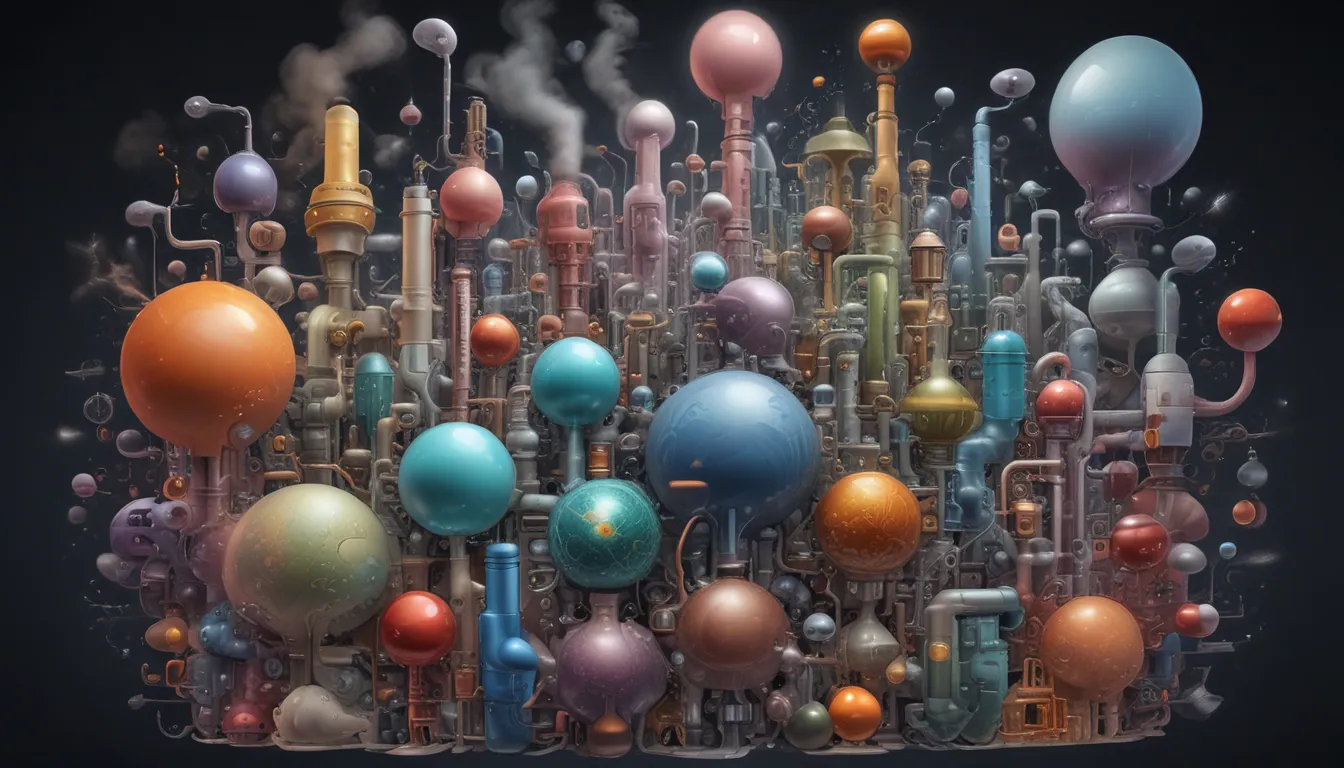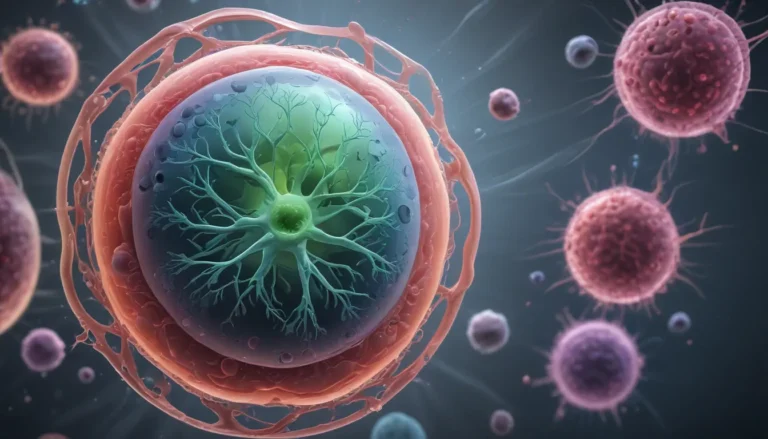A Note About Images: The images used in our articles are for illustration purposes only and may not exactly match the content. They are meant to engage readers, but the text should be relied upon for accurate information.
Gases are an integral part of our daily lives, influencing everything from the air we breathe to the balloons that float above us. Despite their omnipresence, the properties and behaviors of gases often remain a mystery to many. In this article, we will embark on a journey to uncover 12 captivating facts about gases, shedding light on their unique properties and the significant roles they play in science, industry, and beyond. By delving into the complexities of gases, we aim to deepen our understanding of the natural world and the scientific principles that govern it. Join us as we explore the intriguing world of gases and gain a newfound appreciation for their importance in our lives.
Unveiling the Versatility and Significance of Gases
Gases are versatile and essential components that fill our atmosphere and impact our daily lives in myriad ways. Understanding the distinctive properties of gases is not only crucial for scientific exploration but also for practical applications across various fields. These invisible entities play a vital role in sustaining life, serving as a cornerstone of respiratory processes and ecological cycles. However, it is important to acknowledge that certain gases can pose hazards and contribute to environmental issues, underscoring the importance of safe handling and environmental awareness in their utilization.
The Fundamental Nature of Gases
Gases represent one of the fundamental states of matter, alongside solids and liquids. Unlike solids, which have a fixed shape and volume, and liquids, which have a fixed volume but not a fixed shape, gases possess neither a fixed shape nor a fixed volume. Instead, they expand to fill the container they occupy, exhibiting unparalleled versatility and adaptability in their behavior.
Gases: Present Everywhere, Impacting Everything
From the oxygen we breathe to the bubbles in our beverages, gases are ubiquitous in our daily experiences. The Earth’s atmosphere consists of a complex mixture of gases, with nitrogen and oxygen comprising the majority, alongside trace amounts of other gases such as carbon dioxide and argon. Moreover, gases play a pivotal role in numerous industrial processes, ranging from steel production to energy generation, shaping the landscapes of our modern societies.
Exploring the Unique Properties of Gases
Gases boast distinctive properties that set them apart from solids and liquids. They exhibit high compressibility, enabling their volume to decrease under pressure. Additionally, gases have the ability to expand to occupy the space available to them, with their particles engaging in continuous, random motion, adding to their dynamic nature.
The Transformative Nature of Gases
Under varying conditions of temperature and pressure, gases have the capacity to undergo phase transitions, converting into liquids or solids. Condensation, the process through which a gas loses energy and transitions into a liquid state, contrasts with sublimation, where a gas transitions directly into a solid without passing through the liquid phase.
Gases: The Life-Sustaining Elements
Oxygen, a crucial component of the air we breathe, plays a vital role in sustaining life through the process of respiration. Furthermore, carbon dioxide, another indispensable gas, is utilized by plants during photosynthesis to produce oxygen, forming an integral part of the Earth’s delicate ecosystems.
The Industrial Applications of Gases
Gases are essential in a myriad of industrial processes, including welding, refrigeration, and fertilizer production. In the food industry, gases are utilized to preserve and package perishable goods, extending their shelf life and maintaining their quality.
Understanding and Mitigating Hazards
Certain gases, such as carbon monoxide and hydrogen sulfide, pose significant health risks due to their toxic properties. Safely handling and storing gases is imperative to prevent potential hazards and safeguard the well-being of individuals and the environment.
The Ideal Gas Law: Governing Gas Behavior
The behavior of gases is governed by the ideal gas law, relating pressure, volume, temperature, and quantity for a given gas. This fundamental principle offers insights into gas behavior under various conditions and forms the basis for diverse scientific and engineering applications.
The Role of Gases in Healthcare
Medical gases, including oxygen, nitrous oxide, and carbon dioxide, are indispensable in various healthcare settings for respiratory support, anesthesia, and diagnostic procedures. These gases play a critical role in ensuring patient well-being and are integral to modern medical practices.
Gases and Climate Change
Certain gases, such as carbon dioxide and methane, are categorized as greenhouse gases due to their contribution to global warming and climate change. The accumulation of these gases in the atmosphere leads to the greenhouse effect, impacting the Earth’s climate and ecosystems.
Diving into Weight and Density
Each gas possesses a specific weight and density, influencing its behavior and interactions with other substances. Understanding the weight and density of gases is crucial for numerous scientific and industrial applications, including air quality monitoring and pollution control.
Culinary Innovations with Gases
In the culinary realm, gases find diverse applications, such as carbon dioxide for carbonation in beverages and nitrogen for creating foams and textures in modern gastronomy. These innovative uses showcase the versatility of gases in enhancing the culinary experience and pushing the boundaries of culinary creativity.
Embracing the Legacy and Potential of Gases
Gases are an indispensable aspect of our lives, with applications spanning industrial processes, healthcare, and culinary arts. By delving into the unique properties and behaviors of gases, we gain a deeper appreciation for their significance and their pivotal roles in shaping the world around us. Whether in sustaining life or driving innovation, gases continue to captivate scientists and enthusiasts alike, inspiring curiosity and exploration in the scientific community.
In Conclusion
In conclusion, gases are enigmatic substances that wield a profound influence on our world, from sustaining life to driving industrial innovations. By unraveling the 12 best facts about gases, we have uncovered the multifaceted nature of these invisible entities and their integral role in our lives. The study of gases remains a dynamic and evolving field, offering endless opportunities for discovery and advancement in various domains. As we continue to explore the mysteries of gases, we enhance our understanding of the natural world and pave the way for further scientific breakthroughs.
Frequently Asked Questions
Q: What are some examples of gases encountered in daily life?
A: Gases such as oxygen, nitrogen, carbon dioxide, and helium are commonplace in our daily experiences, crucial for respiration, combustion, and industrial processes.
Q: How do gases differ from liquids and solids?
A: Gases are characterized by their ability to expand to fill any container, distinguishing them from liquids and solids that possess defined volumes and shapes, alongside lower density and high compressibility.
Trustworthy Information You Can Rely On
The commitment to delivering trustworthy and engaging content lies at the core of our mission. Each fact shared on our platform is contributed by real users like you, bringing a diverse range of insights and information to our community. Our dedicated editors rigorously review each submission to ensure the highest standards of accuracy and reliability, guaranteeing that the information we provide is not only captivating but also credible. As you embark on your journey of exploration and learning with us, trust in our unwavering dedication to quality and authenticity.
By delving into the fascinating world of gases, we not only uncover the intricate properties and behaviors of these essential substances but also cultivate a deeper appreciation for their impact on our lives and the natural world. From their crucial role in sustaining life to their diverse applications in industry and beyond, gases continue to captivate and inspire us, encouraging ongoing exploration, discovery, and innovation. As we embrace the complexities of gases, we embark on a journey of enlightenment and discovery, enriching our understanding of the world around us and fueling curiosity in the realms of science and beyond.






